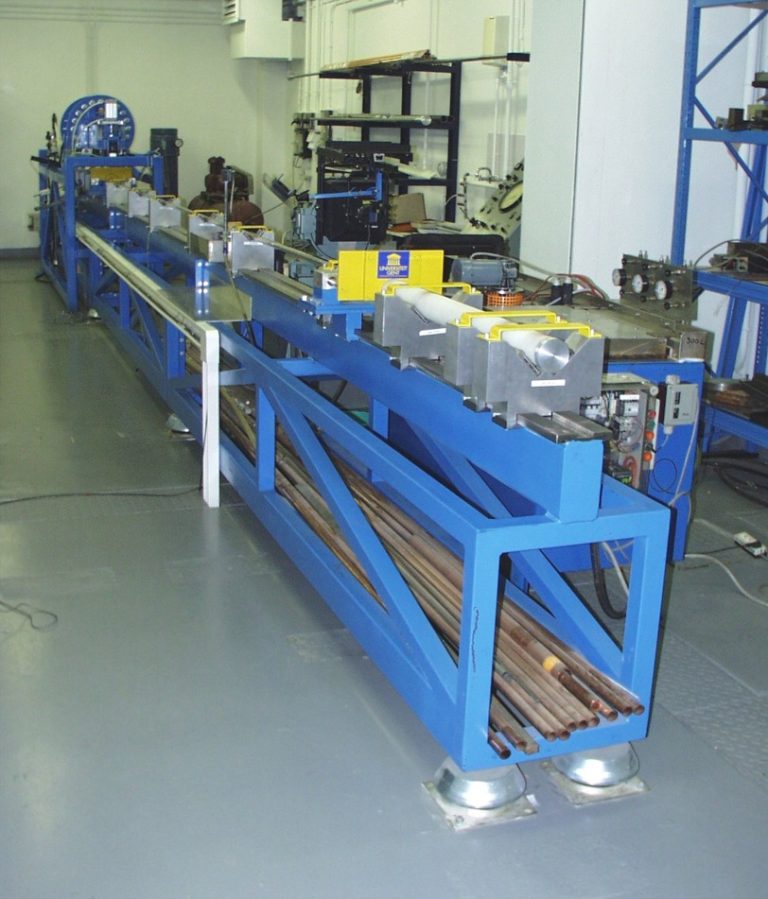Dynamic Tensile Testing
For dynamic tensile testing, DyMaLab disposes of a Split Hopkinson Tensile Bar (SHTB) setup with a large deformation capacity. SHTB setups are used to study the constitutive, damage and fracture behaviour of materials at strain rates from 100 s-1 up to 10 000 s-1. The concept of the Split Hopkinson Tensile Bar setup involves a short test sample sandwiched between two long bars: an input bar and an output bar. In the DyMaLab setup, a tube-like impactor is put around the input bar, and accelerated towards an anvil at the outer end of the input bar. Thus, a so-called incident tensile wave is generated and propagates along the input bar towards the specimen. The velocity of the impactor determines the strain rate in the sample. The incident wave interacts with the specimen, generating a reflected wave and a transmitted wave. The incident, reflected and transmitted waves are measured using strain gauges at well-chosen locations on the Hopkinson bars. From these waves, the total force and elongation history of the specimen can be determined based on the principle of elastic wave propagation in slender bars. However, in order to obtain detailed information on the displacement and strain fields in the specimen, for most tests an additional full-field deformation measurement technique is used.
Technical Specifications
- Total setup length = 12 meter, enabling loading times up to 1.2 ms
- Strain gauge measurements on Hopkinson bars
- Dogbone sample in dynamic equilibrium during high strain rate deformation
- Purpose-developed geometries for damage and fracture characterisation
- Strain rates from 100 s-1 to 2 000 s-1 and strains exceeding 200% can be achieved
- Local strain measurements using high speed camera imaging and digital image correlation
- Dynamic uniaxial tensile testing of advanced high strength steels, pipeline steels, stainless steels, aluminium alloys, titanium alloys, fibre reinforced composites, nanocomposites, steel cord and wire, Kevlar fibres, …
